April 8, 2010
Flower combos, ethnic herbs, squash vine borers, when fertilize lawn
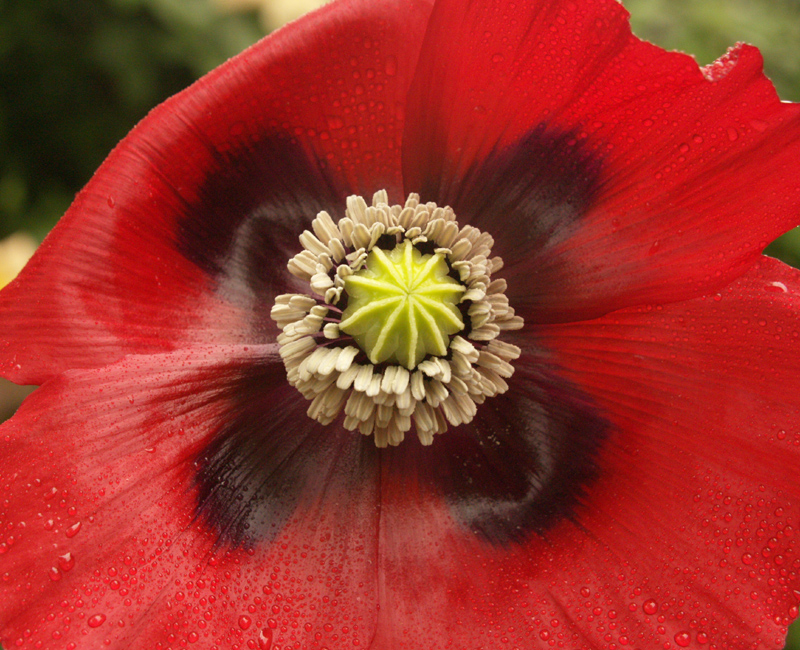
In years like this, you’d think we’d been transported to Seattle or England. Everything seems super-sized.
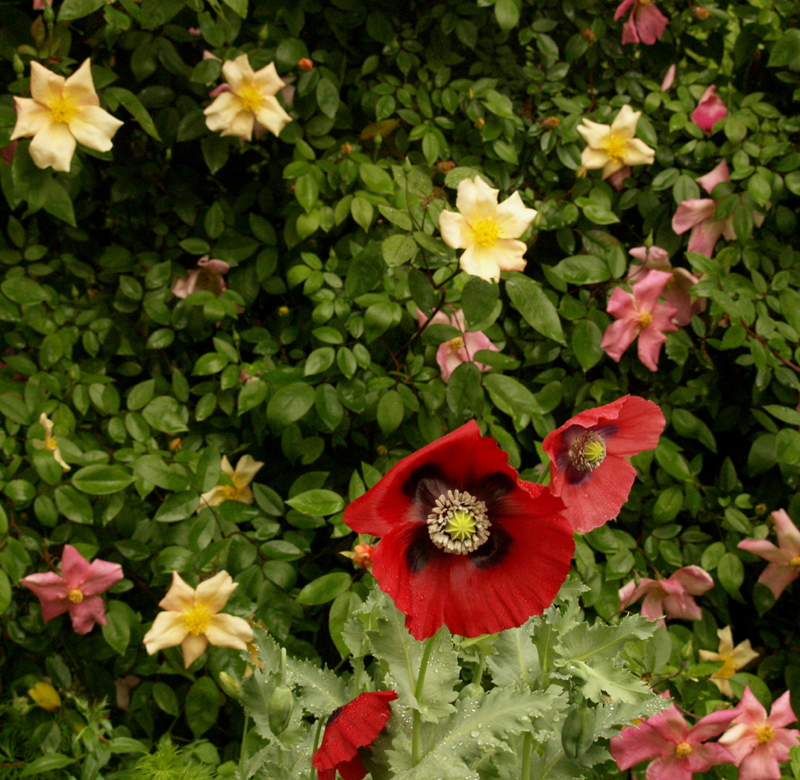
The poppies join the mutabilis rose, showering its multi-tasking flowers. Upon opening, they’re a soft yellow. Bored of that color, they change clothes to cycle through apricot/orange, and pink.
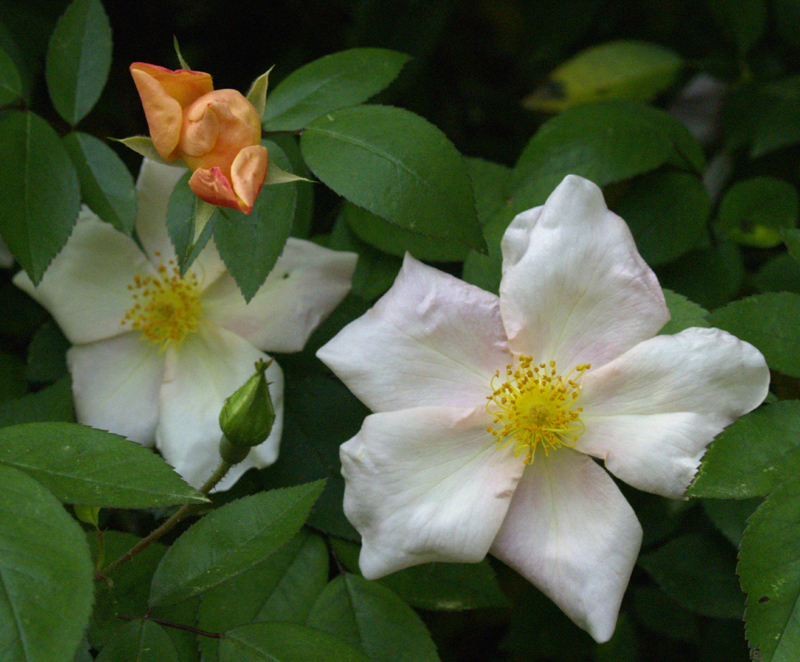
The final stage is crimson, here with spiderwort hogging the camera. That’s okay, since it’ll soon be setting seed, while the mutabilis will keep on blooming, with a return cycle in fall. Must say here: mine doesn’t get full sun; only late afternoon sun. If you need a quick, reliable hedge, and don’t want to do much work, this is the rose for you.
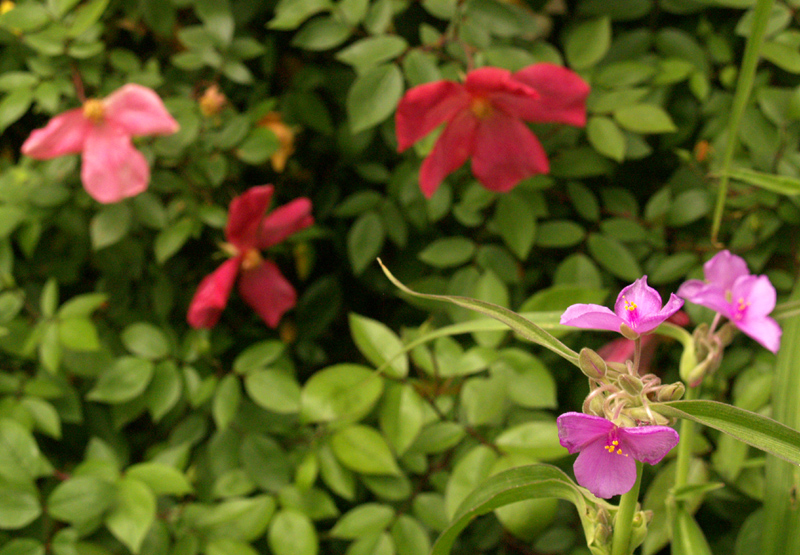
In every partially shaded nook, I’ve tucked in Baby Blue Eyes (Nemophila menziesii), thanks to the transplants that MSS at Zanthan Gardens gave me last fall.
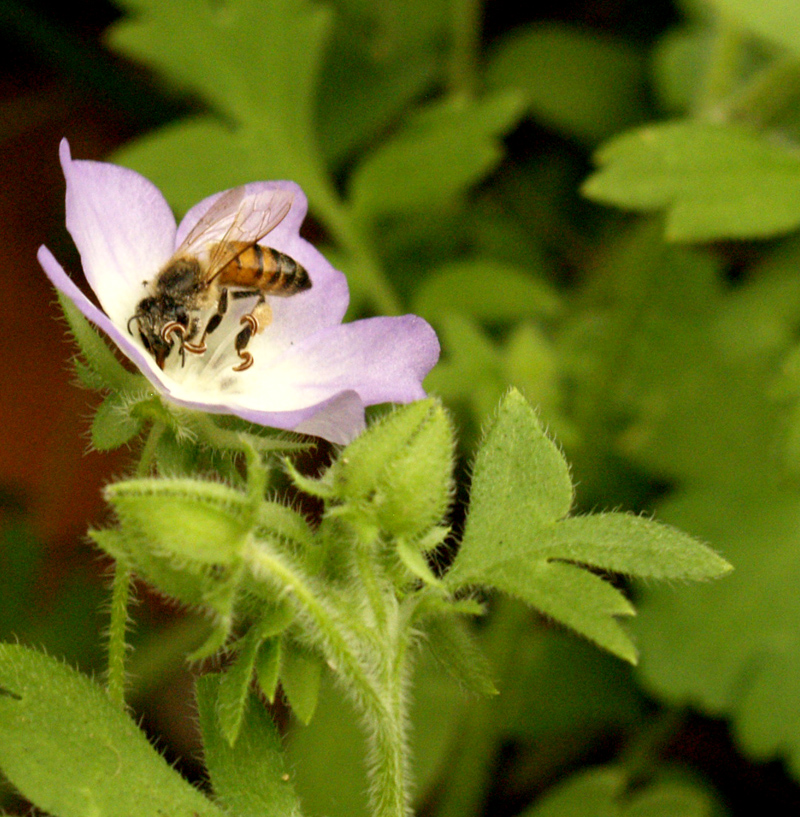
It’s an annual that re-seeds like crazy in her garden, but I plan to collect at least some seeds for safety. Here, it joins the native perennial, golden groundsel, (Packera obovata). Baby’s roots are under cover under the mountain laurel, but happy for its face to be in the sun, to shake hands with the direct hit that golden groundsel likes.
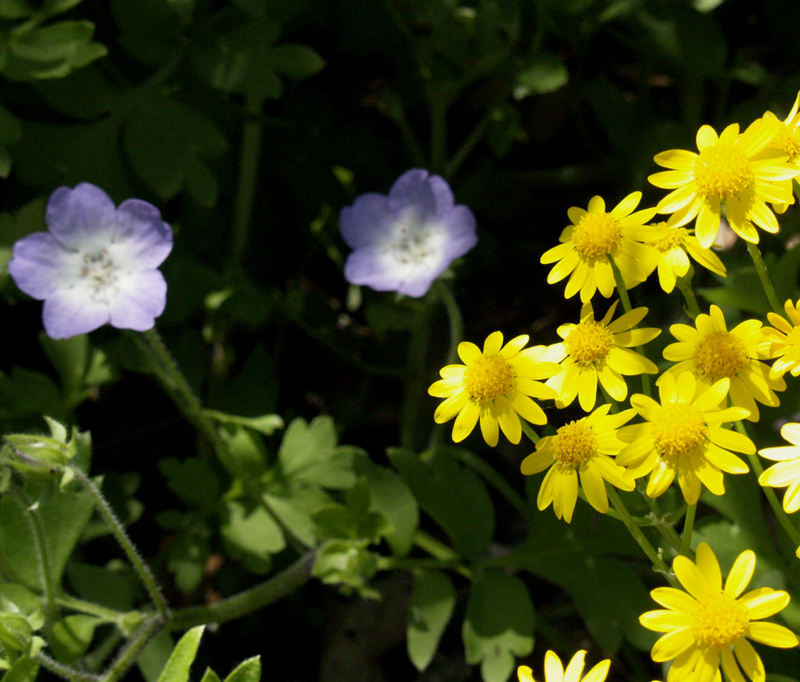
And here with larkspur.
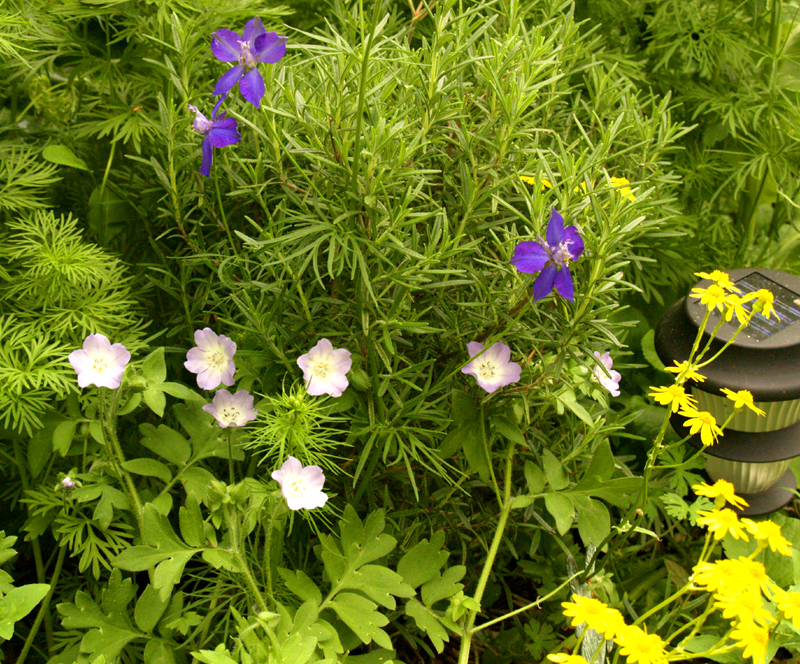
More lavender in the crape bed with this bearded iris.
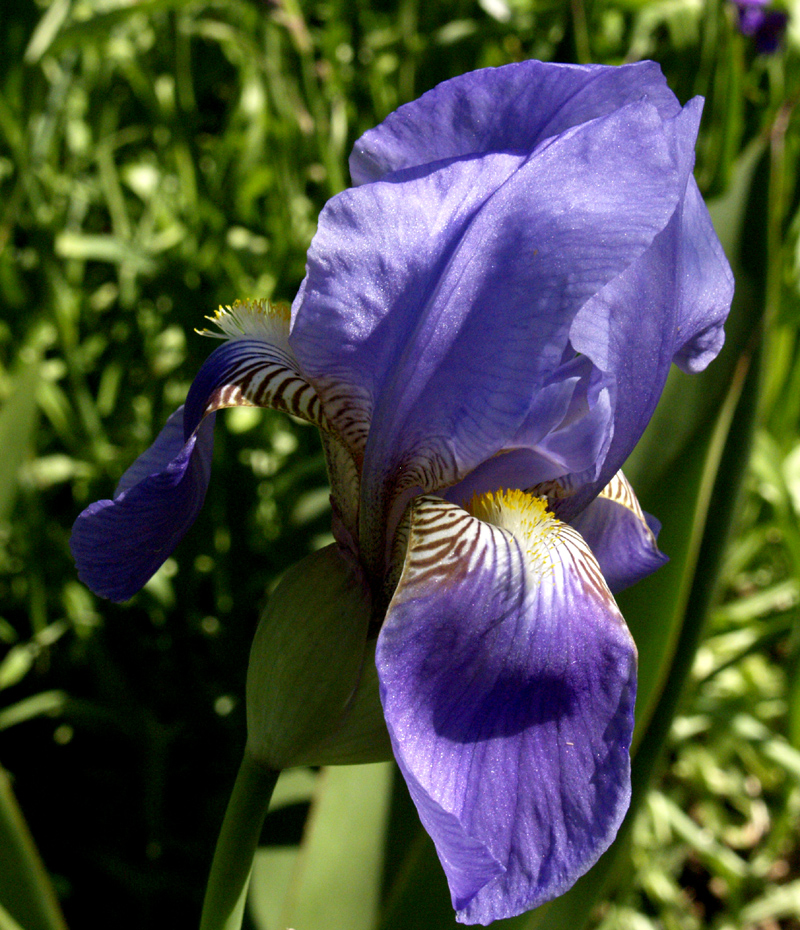
Here with the Lady Banks rose beyond.
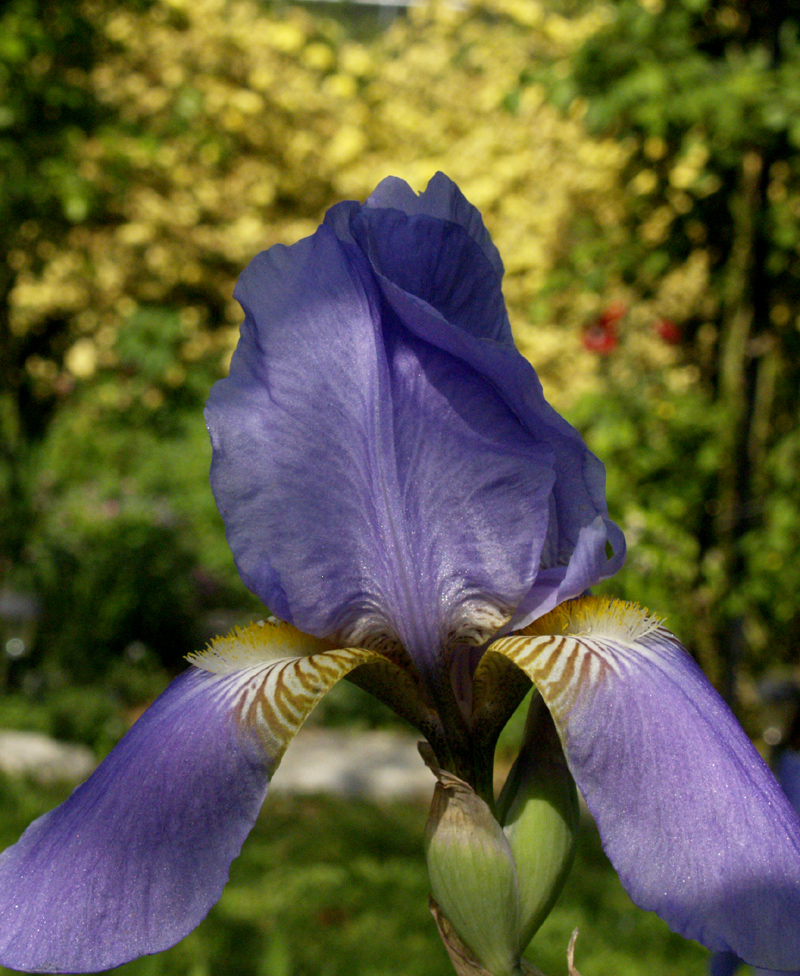
The cat cove’s contribution to the theme is Blue-eyed grass (Sisyrinchium angustifolium), a native perennial.
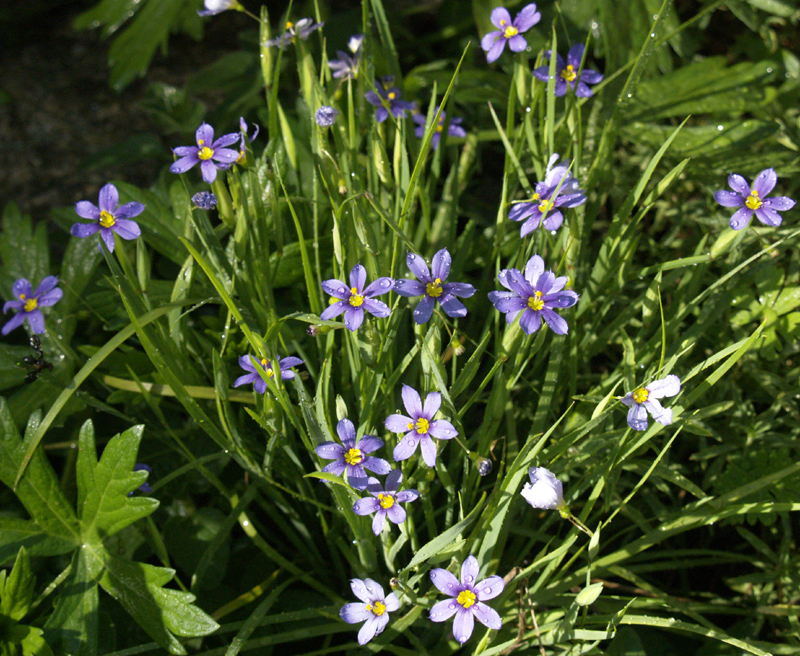
Now that the weather is warming up, it’s time to get spicy. Since Thai, Indian, and Mexican recipes captivate our taste buds these days, this week on CTG, Amanda Moon from It’s About Thyme joins Tom to tantalize us with curry plant, Rau Ram (Vietnamese coriander), Thai long chile, galanga ginger, black cardamom, and more.
Meet her in person at It’s About Thyme’s HerbDay Mini-Festival from 1-4 on May 1. A celebration of herbs local, exotic, and medicinal, speakers also include humorist Mary Gordon Spence and herbalist Ellen Zimmermann.
Owners Diane & Chris Winslow host free workshops all the time (backyard chicken workshop on May 2), so check them out, too. And be sure to sign up for Chris’s great enewsletter for his weekly garden tips. Get all the details at It’s About Thyme.
More gardeners than ever are turning their front yards into edible gardens. In 2008, we had the honor to meet Fritz Haeg, author of Edible Estates: Attack on the Front Lawn. He joined the Arthouse at the Jones Center and Foundation Communities to turn a grassy apartment complex into food for the families. Since so many gardeners are turning to food these days, it was time to inspire you with a repeat of our video tour. I know you’ll be as inspired about the kids jumping in as we were.
A lot of gardeners are itching to know when it’s time to fertilize the lawn. This week Daphne explains when and why. Don’t be captivated by weed & feed products, either, since they can harm your trees!
Her featured plant is Mexican plum. It’s finished flowering for this year, and is now setting fruit. (The birds have a serious network of their own to announce when they’re ready to eat). But you can still plant for a drought-hardy tree that’s excellent for small gardens or to accent larger spaces.
Since it’s time to plant squash, Trisha explains how to get ahead of the dreaded squash vine borer.
Until next week, Linda
tags:







